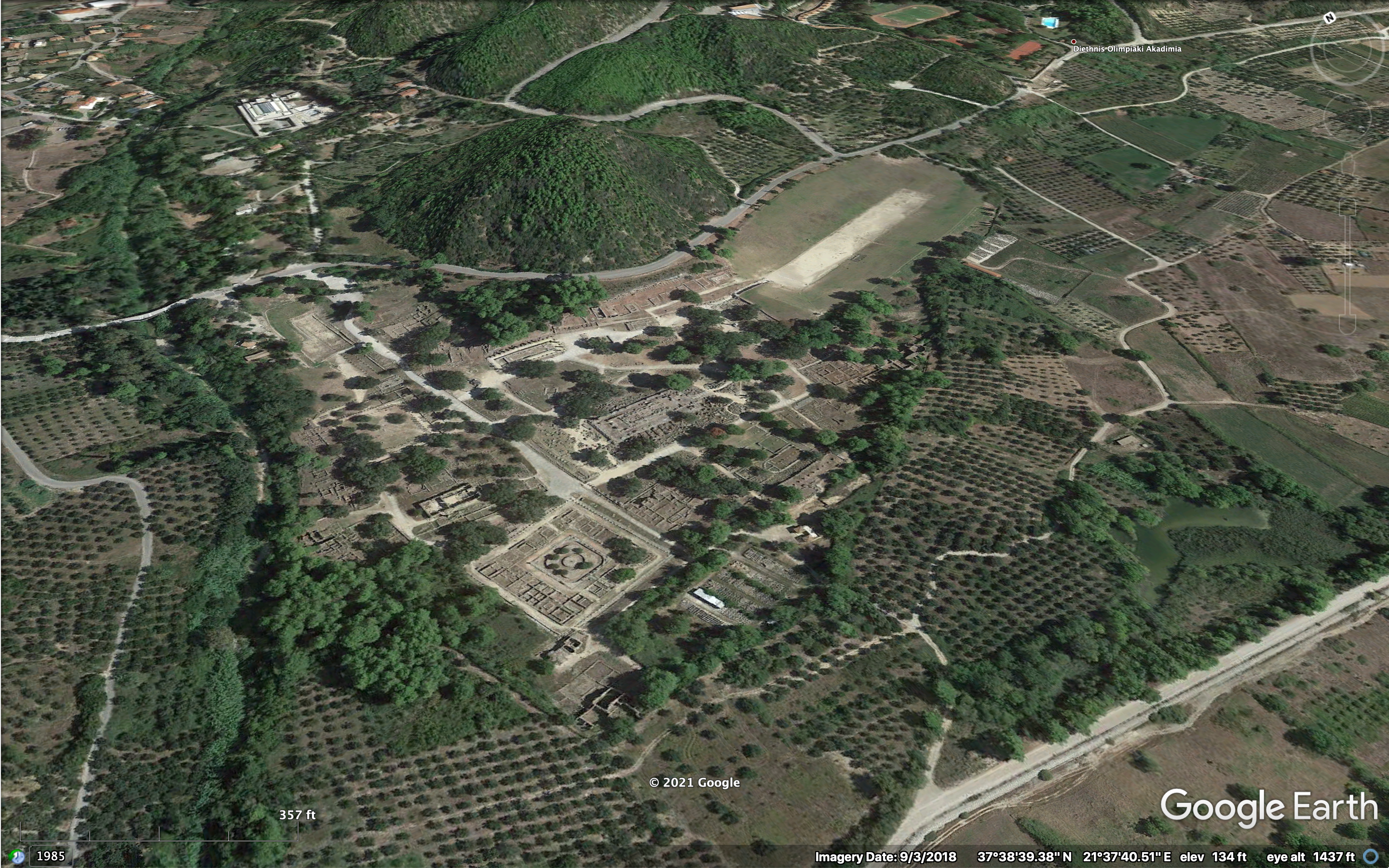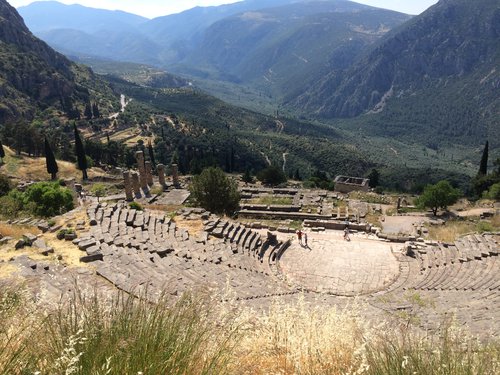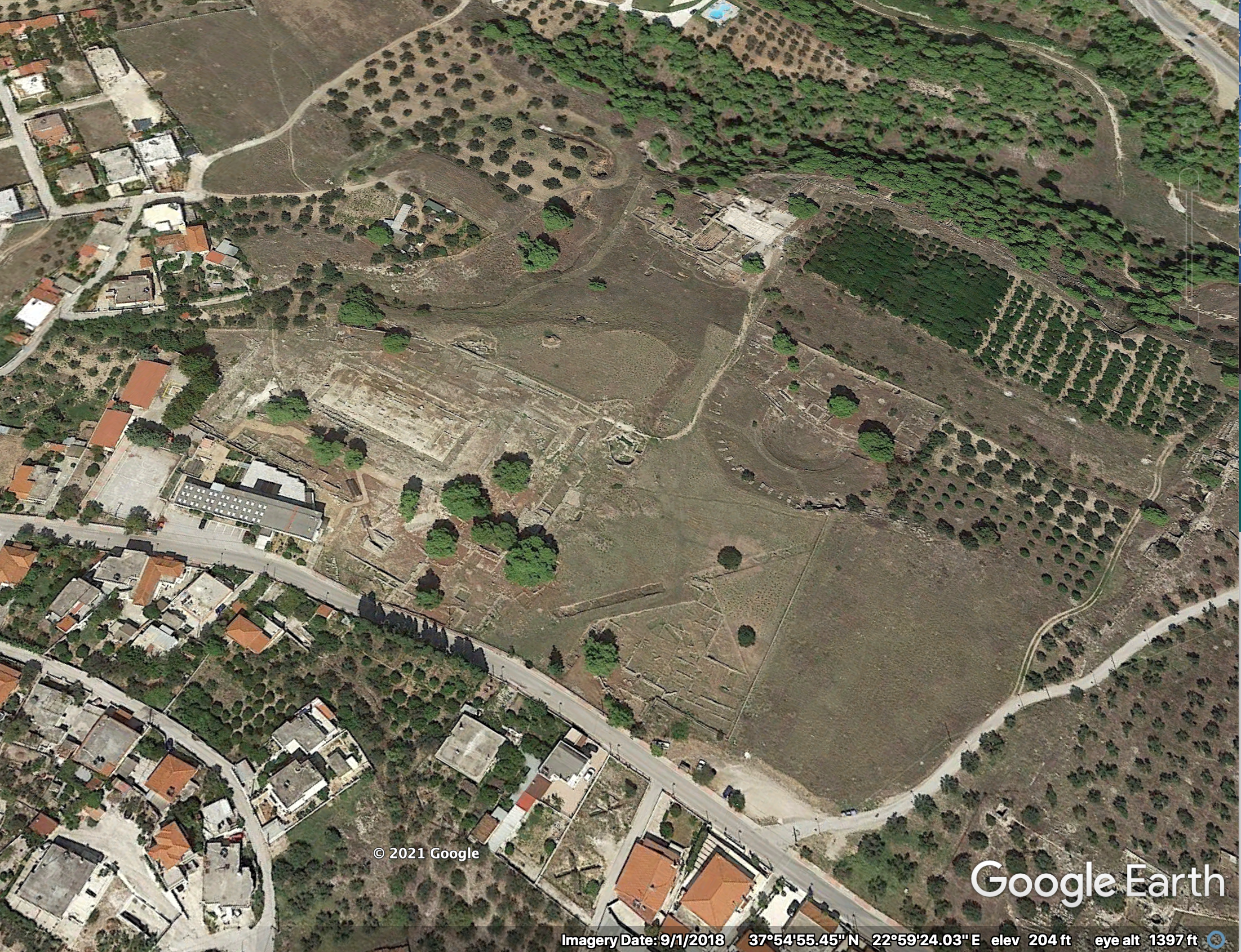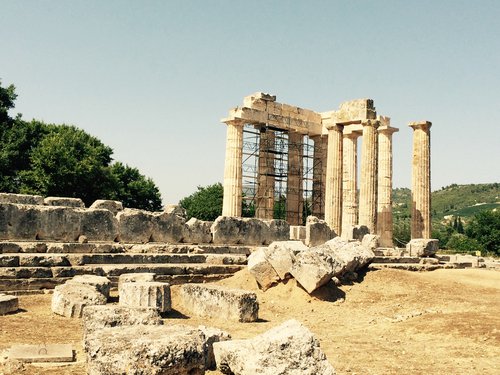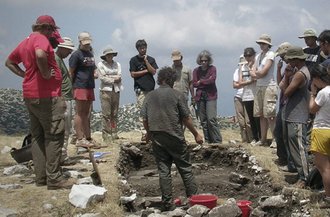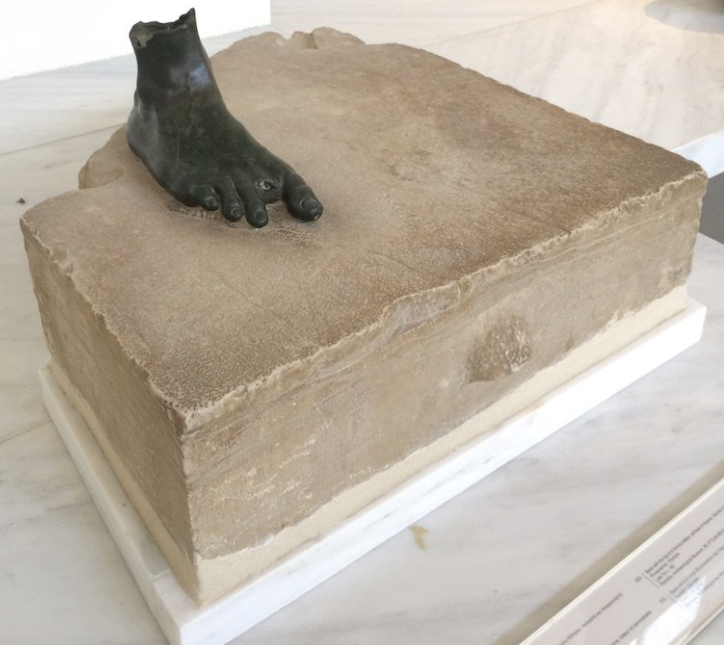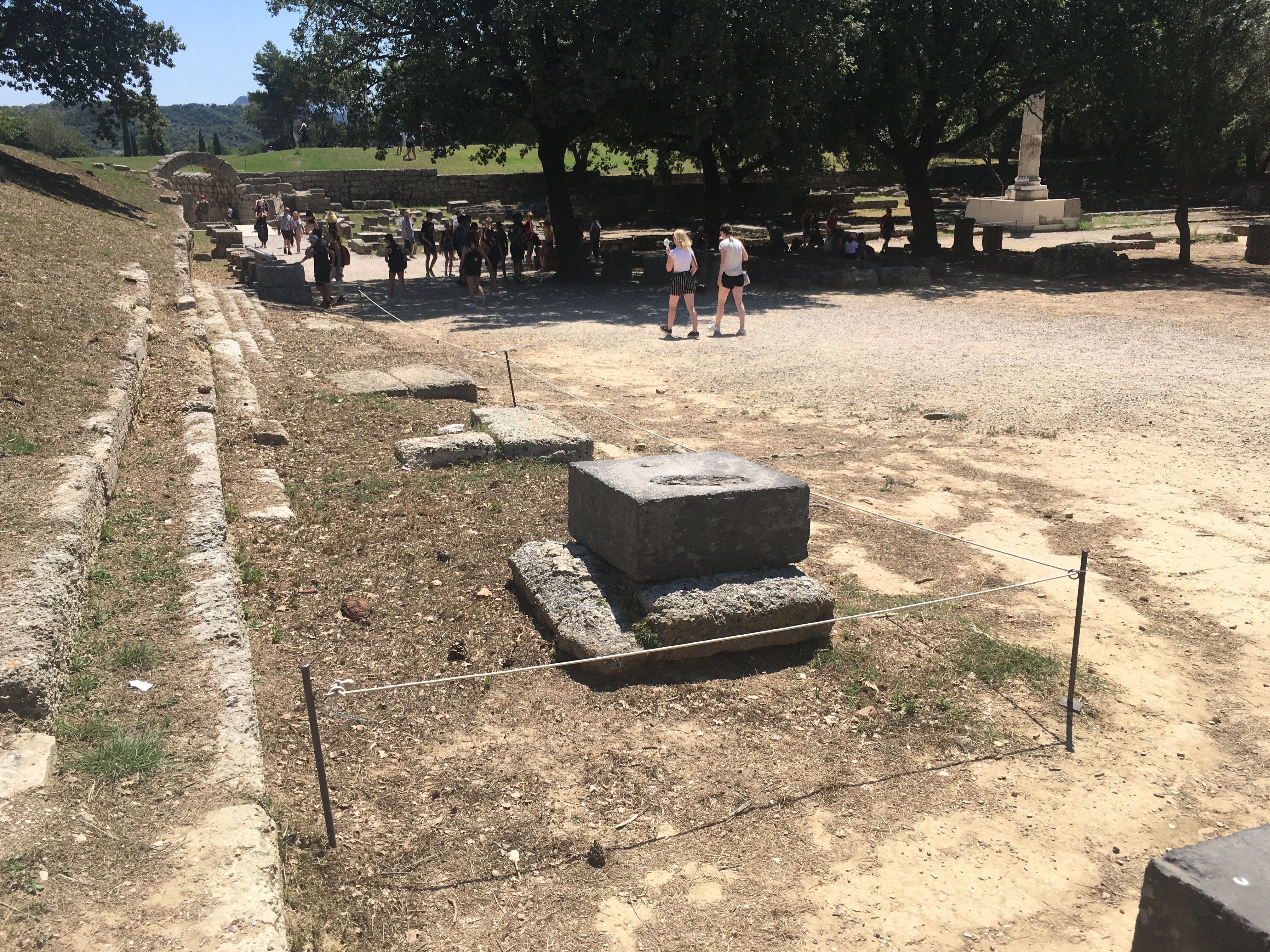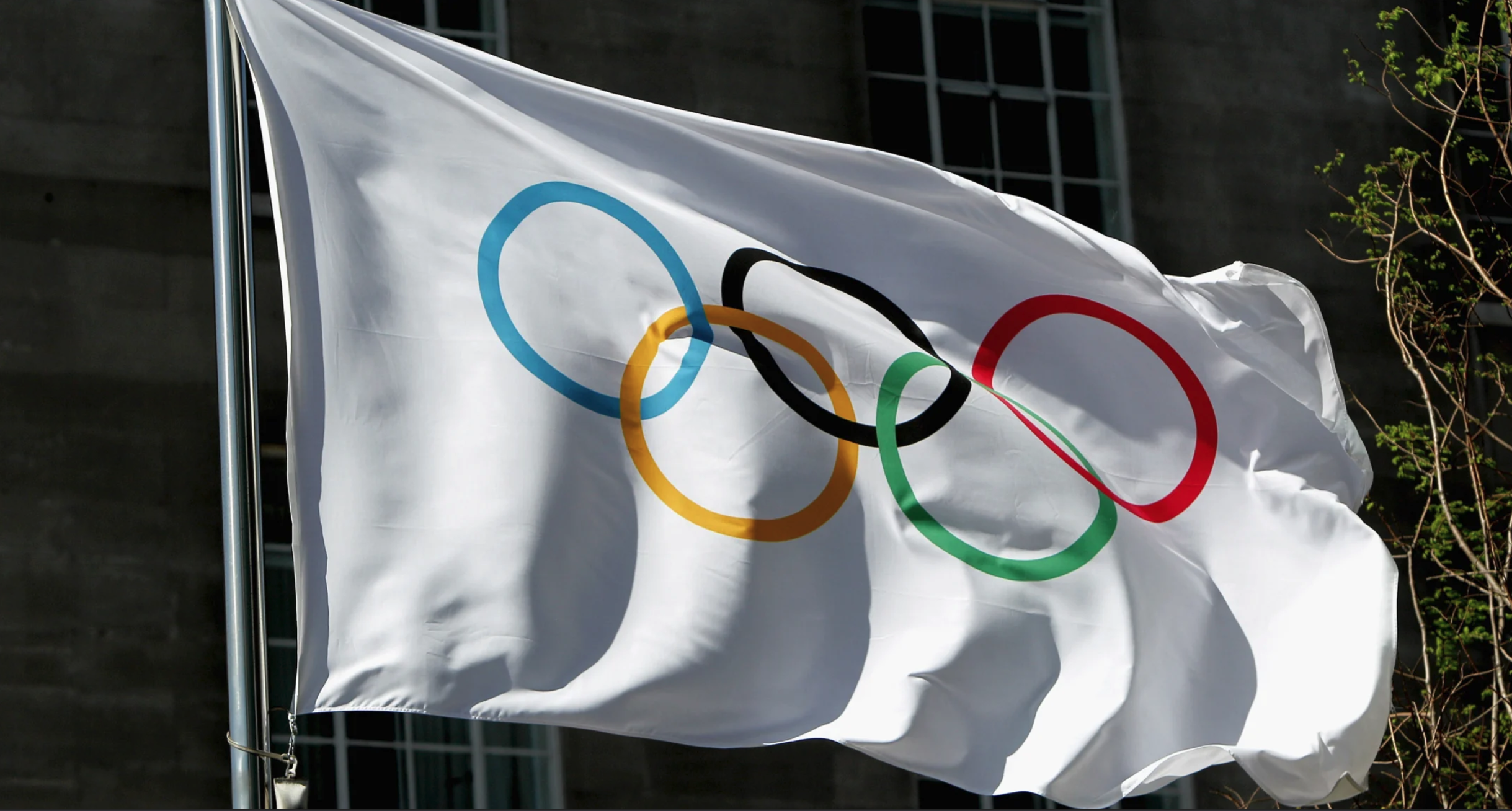Overview
The ancient Olympic Games were primarily a part of a religious festival in honor of Zeus, the father of the Greek gods and goddesses. The festival and the games were held in Olympia, a rural sanctuary site (model shown here, courtesy of the British Museum) in the western Peloponnesos.
The Greeks that came to the Sanctuary of Zeus at Olympia shared the same religious beliefs and spoke the same language. The athletes were all male citizens of the city-states from every corner of the Greek world, coming from as far away as Iberia (modern day Spain) in the west and the Black Sea (modern day Turkey) in the east.
The sanctuary was named in antiquity after Mt. Olympos, the highest mountain in mainland Greece which was hundres of miles away. In Greek mythology, Mt. Olympos was the home of the greatest of the Greek gods and goddesses known as the 12 Olympian Deities.
According to the Olympic Register, an ancient document listing the known Olympic victors, the ancient Olympic Games began in the year 776 BC, when Koroibos, a cook from the nearby city of Elis, won the stadion race, a foot race 600 feet long. The stadion track at Olympia is shown here. According to some literary traditions, this was the only athletic event of the games for the first 13 Olympic festivals or until 724 BC when the second athletic event was introduced, the diaulos, a footrace 1200 feet long. From 776 BC, the Games were held in Olympia every four years for almost 12 centuries.
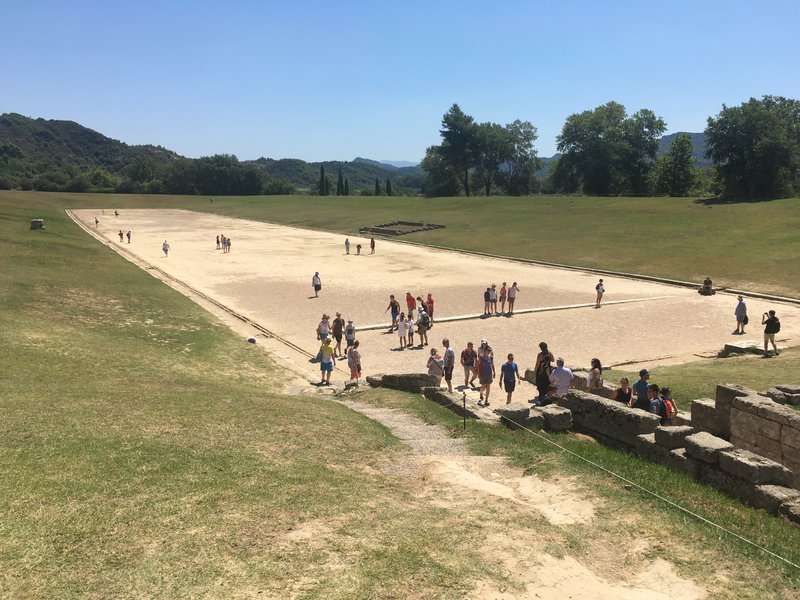
Contrary evidence, both literary and archaeological, suggests that the games may have existed at Olympia much earlier than this date, perhaps as early as the 10th or 9th century BC.
A series of bronze tripods have been discovered at the Sanctuary of Zeus at Olympia some of which may date to the 10th and 9th centuries BC. The tripods are both large and small and it has been suggested that they may have been prizes for contests that took place at Olympia before 776 BC.
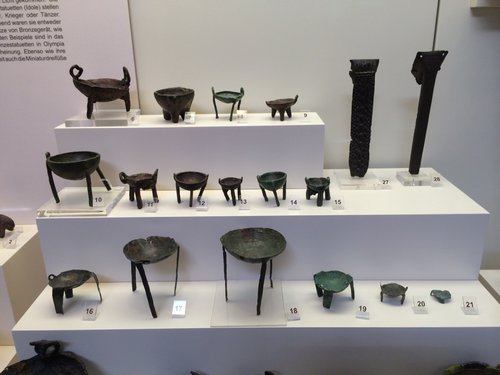
The earliest Greek athletic contests are depicted on the Francois vase
The two horse chariot race of the Funeral Games of Patroklos are shown on this Attic Black-Figure kaylx crater from ca. 570 BC. Some of the prizes, tripods and cauldrons, for the athletes, are shown underneath the horses.
Go to http://www.polomusealetoscana.beniculturali.it/index.php?it/198/firenze-maf-museo-archeologico-nazionale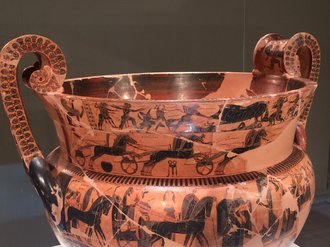
The marathon was NOT an event of the ancient Olympic games. The marathon is a modern event that was first introduced in the Modern Olympic Games of 1896 in Athens, a race from Marathon, northeast of Athens, to the Olympic Stadium, a distance of 40 kilometers.
The race commemorates the run of Pheidippides, an ancient “day-runner” who carried the news of the Persian landing at Marathon of 490 BC from Athens to Sparta (a distance of 153 miles) in order to enlist help for the battle. According to the fifth century BC ancient Greek historian Herodotus, Pheidippides delivered the news to the Spartans the next day. Pheidippides did not die as a result of his run.
The distance of the modern marathon was standardized as 26 miles 385 yards or 42.195 km in 1908 when the Olympic Games were held in London. The distance was the exact measurement between Windsor Castle, the start of the race, and the finish line inside White City Stadium.
In the modern day many believed that the story of Herodotus could not possibly be true - until during a modern event, the Spartathlon, run between Athens and Sparta the record time has been set at 20 hours, 22 minutes by Yiannis Kouros, an Arcadian who lives part of the year in Australia.
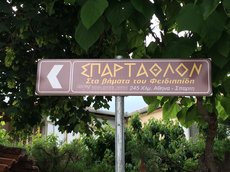
Sign for the route of the Spartathlon in Tegea, Peloponnese
The Spartathlon is an ultra distance road race run in the modern day between Athens - Sparta, a distance of 153 miles (246 km). It commemorates the ancient day-runner, Pheidippides, who ran from Athens to Sparta in 490 BC to announce the Persian invasion at Marathon and to ask for Spartan assistance.
David Gilman Romano
Nudity at the Games
There are two stories relating to the question of nudity at the ancient Olympic Games. One story states that it was a runner from Megara, Orsippos or Orrhippos who, in 720 BC was the first to run naked in the stadion race when he lost his shorts in the race. Another tradition is that it was the Spartans who introduced nudity to the Olympic Games in the 8th century B.C. as it was a Spartan tradition. It is not clear if the very first recorded victor at Olympia, Koroibos, who won the stadion race in 776 BC wore shorts or not. It seems fairly clear that by the late 8th century nudity was common for the male contestants.
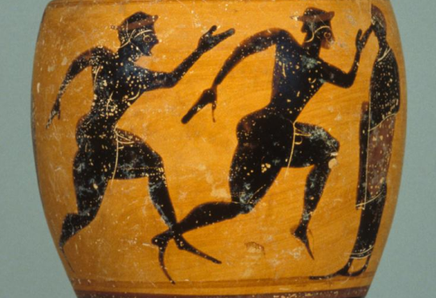
This Black-Figure lekythos from the Penn Museum was the subject of the US Olympic stamp that was issued in 2004, seen below.
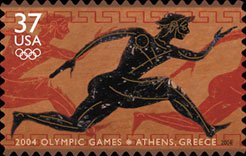
From Ancient to Modern
Although the ancient Games were staged in Olympia, Greece, from 776 BC through AD 393, it took 1503 years for the Olympics to return. The first modern Olympics were held in Athens, Greece, in 1896. The man responsible for its rebirth was a Frenchman named Baron Pierre de Coubertin, who presented the idea in 1894. His original thought was to unveil the modern Games in 1900 in his native Paris, but delegates from 34 countries were so enthralled with the concept that they convinced him to move the Games up to 1896 and have Athens serve as the first host.
The Olympic Flame
The idea of the Olympic torch or Olympic Flame was first inaugurated in the 1928 Olympic Games in Amsterdam. There was no torch relay in the ancient Olympic Games. There were known, however, torch relays in other ancient Greek athletic festivals including those held at Athens. The modern Olympic torch relay was first instituted at the 1936 Olympic Games in Berlin.
The Olympic Oath was introduced in 1920 and in 1928 the Olympic Flame was introduced in the Olympic Stadium in Amsterdam.
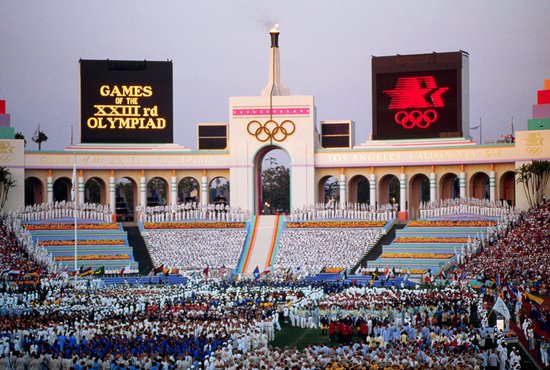
Los Angeles Coliseum during the Opening Ceremony of the 1984 Olympic Games.
Los Angeles Coliseum with the Olympic Flame during the 1984 Olympic Games. The Coliseum was also the site of the 1932 Olympic Games.
New York Magazine







